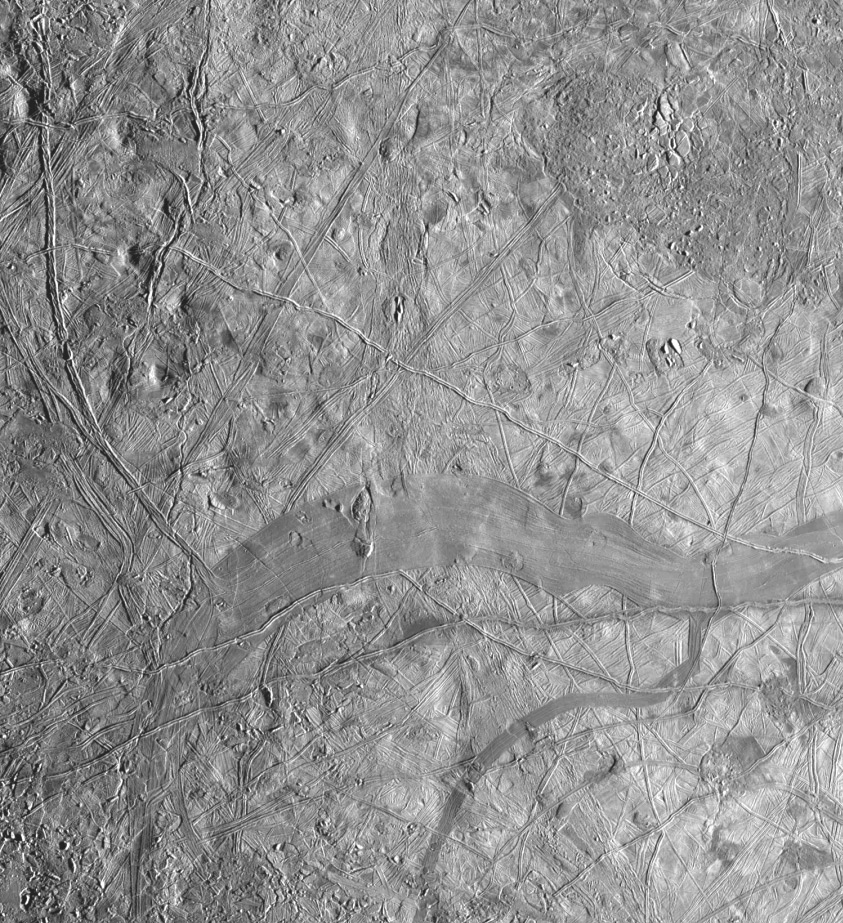All Resources
Chaotic Terrain on Europa

Published: Dec. 16, 1997
This mosaic of images taken by NASA's Galileo spacecraft camera shows a region of Jupiter's moon Europa that is characterized by dark and splotchy-looking terrain—evidence of some of the most recent geologic activity on Europa.
The mottled appearance results from chaotic areas where the bright, icy crust has broken apart to expose a darker material underneath. North is to the top of the image, and the Sun illuminates the scene from the right. The images were taken on Nov. 6, 1997.
The smooth gray band at the lower part of image represents a zone where the Europan crust has been fractured, separated, and filled in with material from the interior.
The chaotic terrain and the gray band show that Europa has been subjected to intense geological deformation. The mosaic is centered at 2.9 degrees south latitude and 234.1 degrees west longitude and covers an area of 159 miles by 102 miles (261 kilometers by 168 kilometers). The smallest distinguishable features in the image are about 751 feet (229 meters) across.
These images were obtained on Nov. 6, 1997, when the Galileo spacecraft was approximately about 13,240 miles (21,700 kilometers) from Europa.


